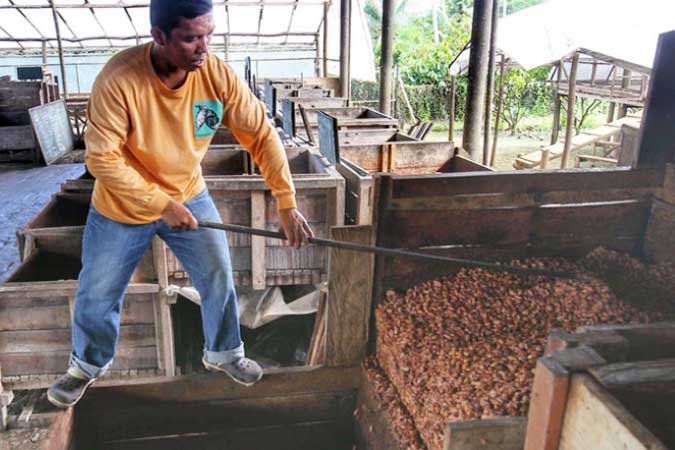
CACAO FARMERS continue to struggle to increase yields to a level sufficient to raise their earnings, according to an industry official.
At a briefing on Wednesday, Philo Chua, board member of Philippine Cacao Industry Association (PCIA), said cacao farmers are only able to produce 700 grams of dried beans per tree, well below the target of two kilograms, the level estimated to generate adequate earnings.
He said that the government recently started to revive the industry by distributing seedlings and promoting the beans.
“Because of (the resulting) unbridled enthusiasm, we told farmers to just plant anywhere. What happened is that for a lot of farmers, the productivity is not there,” he said.
Mr. Chua said the Philippines has been only able to produce 10,000 metric tons (MT) of beans, well short of demand estimated at 37,000 MT.
“There’s always a big opportunity for the cacao industry right now because demand is still increasing,” he said.
Some large-scale companies are not buying domestic beans and are importing because they are worried about supply.
According to the Philippine Cacao Industry Roadmap for 2017-2022, the Philippines, the first country in Asia to plant cacao, remains an importer of chocolate, cocoa powder, cocoa beans, and cocoa butter.
Mr. Chua said that with the aid of state universities, the industry is now focusing on how and where cacao should be planted.
“We learned that cacao should not be planted just anywhere, even though we say that the Philippines is a good place to plant cacao,” he said.
He said that the PCIA and the Department of Agriculture have mapped out ideal growing areas for cacao.
He said standing trees are sometimes cut by farmers interested in cultivating durian.
“There’s definitely big opportunity for the cacao right now. Even the cacao price here is quite high. Our prices are much better than international prices because Philippine cacao is known for its fine flavor,” he said
He said that the Philippines is exporting cacao to chocolate makers in Japan, North America, and Europe and has produced beans that have been recognized as among the best in the world, with gold medals awarded to Philippine entrants starting 2017. — Sheldeen Joy Talavera



